1. Overview
Lauri Allan Törni, later known as Larry Alan Thorne, was an exceptional Finnish-born soldier who served with distinction under three different national flags during major 20th-century conflicts. His military career spanned the Finnish Army during the Winter War and Continuation War, a brief period with the German Waffen-SS on the Eastern Front, and finally, the United States Army Special Forces during the Vietnam War. Törni's life was marked by remarkable combat effectiveness, a daring escape from a post-World War II treason conviction in Finland, and his eventual death in a helicopter crash during a covert mission in Laos as part of the Vietnam War. His remains were recovered decades later and interred at Arlington National Cemetery, cementing his complex and enduring legacy as a highly decorated and controversial figure.
2. Early Life and Background
Lauri Allan Törni was born on May 28, 1919, in Viipuri, Viipuri Province, which is now Vyborg, Russia. His father, Jalmari (Ilmari) Törni, was a ship captain, and his mother was Rosa Maria (née Kosonen). He had two younger sisters, Salme Kyllikki Rajala, born in 1920, and Kaija Iris Mikkola, born in 1922. Before Törni's birth, an elder brother had died from smallpox. As a youth, Törni was athletic and was an early friend of Sten Suvio, who would later become an Olympic boxing gold medalist. Prior to his military service, Törni attended business school and served with the Civil Guard. He also worked as a sailor on his father's small cargo ship, employed by the Finnish Sugar Company (Suomen Sokeri OyFinnish).
Törni began his military service in the Finnish Army on September 3, 1938, to fulfill his conscription. On October 8, he was assigned to a machine gun company, and in December, he entered non-commissioned officer school. He was promoted to Corporal on March 1, 1939.
3. Military Career: Finnish Army (World War II)
Törni's distinguished service in the Finnish Army during World War II earned him significant recognition.
Upon the completion of Törni's conscription in the autumn of 1939, the Winter War erupted between Finland and the Soviet Union. The Finnish Defence Forces mobilized, and Törni, now a reservist, remained in the military. He was assigned to Jaeger Battalion 4, led by Lieutenant Colonel Martti Nurmi, a unit tasked with deep penetration attacks behind enemy lines. This battalion operated under the 13th Division in the northern Lake Ladoga region, confronting invading Soviet troops at Rautu.
In January 1940, Lieutenant Colonel Nurmi died in a traffic accident, and Major Matti Aarnio took command of the battalion. Törni participated in the battles at Lake Ladoga, specifically in the destruction of encircled Soviet divisions in Lemetti. His heroic performance in these engagements quickly caught the attention of his commanders. Towards the end of the Winter War, from February 1940, he attended officer training at Hamina and was commissioned as a VänrikkiFinnish (Second Lieutenant) in the reserves on May 9, 1940.
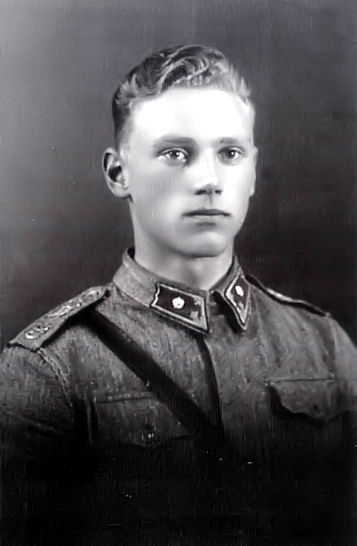
Most of Törni's reputation was solidified during the Continuation War (1941-1944) between the Soviet Union and Finland. In January 1943, a unit specializing in guerrilla warfare was formed from two companies of the 1st Division, and Törni was appointed commander of the 2nd Guerrilla Company. This unit became informally known as Detachment Törni. Its mission was to penetrate deep behind enemy lines to conduct sabotage and other special operations. The unit quickly gained a formidable reputation on both sides of the front for its combat effectiveness. Among Törni's subordinates was Mauno Koivisto, who would later become the President of Finland. Koivisto served in a reconnaissance company under Törni's command during the Battle of Ilomantsi in July and August 1944, which was the final Finnish-Soviet engagement of the Continuation War.

Detachment Törni inflicted such heavy casualties on Soviet units that the Soviet Army placed a bounty of 3.00 M FIM on Törni's head. He was the only Finnish officer for whom the Soviet authorities offered such a reward. For his actions, Törni was decorated with the Mannerheim Cross 2nd Class on July 9, 1944. He also received other Finnish decorations, including the 2nd class Medal of Liberty on July 26, 1940, the 1st class Medal of Liberty on August 24, 1940, the 3rd class Cross of Liberty on October 9, 1941, and the 4th class Cross of Liberty on May 23, 1942. His other Finnish awards included the 1st Division Memorial Cross, the Border Jaeger Troops Cross, the Defense Forces Bronze Medal, the Winter War Commemorative Medal, and the Continuation War Commemorative Medal Gold Award.
His ranks in the Finnish Army were:
- September 3, 1938: Conscript (reserves)
- March 1, 1939: Lance Corporal (reserves)
- May 9, 1940: Second Lieutenant (reserves)
- March 5, 1942: Lieutenant (reserves)
- August 27, 1944: Captain (reserves)
4. Military Career: German Service and Resistance
Following the Moscow Armistice in September 1944, which required the Finnish government to remove German troops from its territory, much of the Finnish Army was demobilized. Törni was left unemployed in November 1944. Unwilling to accept the terms of the armistice, which he saw as a betrayal, Törni became involved with pro-German resistance movements.
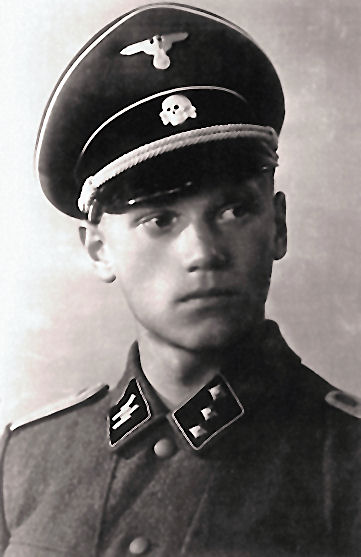
In June 1941, Törni had already undergone seven weeks of training with the Waffen-SS in Vienna, Austria, where he was recognized by the Germans as an UntersturmführerGerman. In January 1945, he was recruited by the Pro-German resistance movement in Finland and traveled to Germany for saboteur training. The intention was to organize resistance in Finland should the Soviet Union fully occupy the country. This period saw many Finnish officers secretly cooperating with pro-German resistance groups, conducting various military training exercises. When the Lapland War broke out, these resistance movements collaborated with German forces to attack the flanks of Soviet troops.
The training in Germany ended prematurely in March 1945. Unable to secure safe transportation back to Finland, Törni joined a German unit to fight Soviet troops near Schwerin, Germany. He surrendered to British forces in the final stages of World War II, though some sources also mention American forces. He managed to escape from a British prisoner-of-war camp in Lübeck, Germany, and returned to Finland in June 1945.
His ranks in the German Waffen-SS were:
- May 18, 1941: UntersturmführerGerman (Nordost)
- April 15, 1945: HauptsturmführerGerman (Sonderkommando Nord)
He was awarded the Iron Cross 2nd class on December 11, 1943.
5. Post-War Finland and Emigration to the United States
Upon his return to Finland in the summer of 1945, Törni sought to rejoin his family, who had been evacuated from Karelia and were now in Helsinki. However, Finland was under Soviet influence, and many former military personnel who had cooperated with Nazi Germany were considered traitors. Törni was arrested by Valpo, the Finnish state police, in Turku. He escaped during transfer but was re-arrested in Helsinki in March 1946.
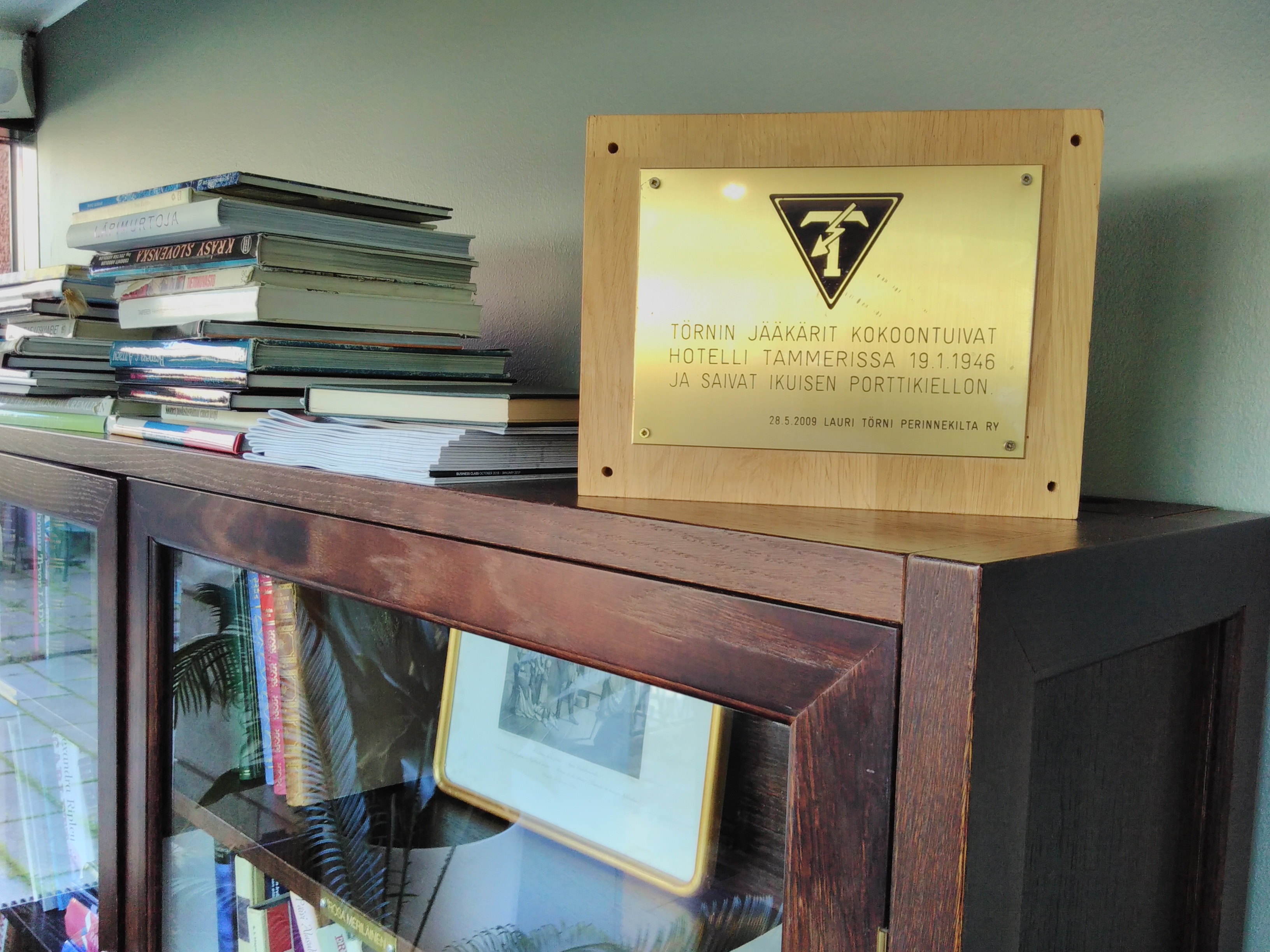
In October and November 1946, Törni was tried for treason due to his continued service in the German military during the Lapland War. In January 1947, he was convicted and sentenced to six years of imprisonment and a four-year deprivation of his civil rights. He was imprisoned at the Turku provincial prison, from which he escaped in June 1947. He was recaptured and subsequently sent to the Riihimäki State Prison. On December 23, 1948, Juho Kusti Paasikivi, the President of Finland, granted him a pardon.
In 1949, Törni, accompanied by his wartime executive officer Holger Pitkänen, traveled to Sweden. They crossed the border from Tornio to Haparanda, a town with a significant ethnic Finnish population. Pitkänen was arrested and repatriated to Finland during this journey. Törni continued to Stockholm, where he stayed with Baroness von Essen, who provided refuge to many fugitive Finnish officers after the war. During his time in Sweden, Törni became engaged to Marja Kops, a Swedish Finn.
To secure employment, Törni traveled under an alias as a Swedish seaman aboard the SS Bolivia, destined for Caracas, Venezuela. In Caracas, he reunited with Matti Aarnio, one of his former Winter War commanders, who was living in exile in Venezuela after the war. Törni then stowed away on a Swedish cargo ship, the MS Skagen, which departed from Caracas for the United States in 1950.
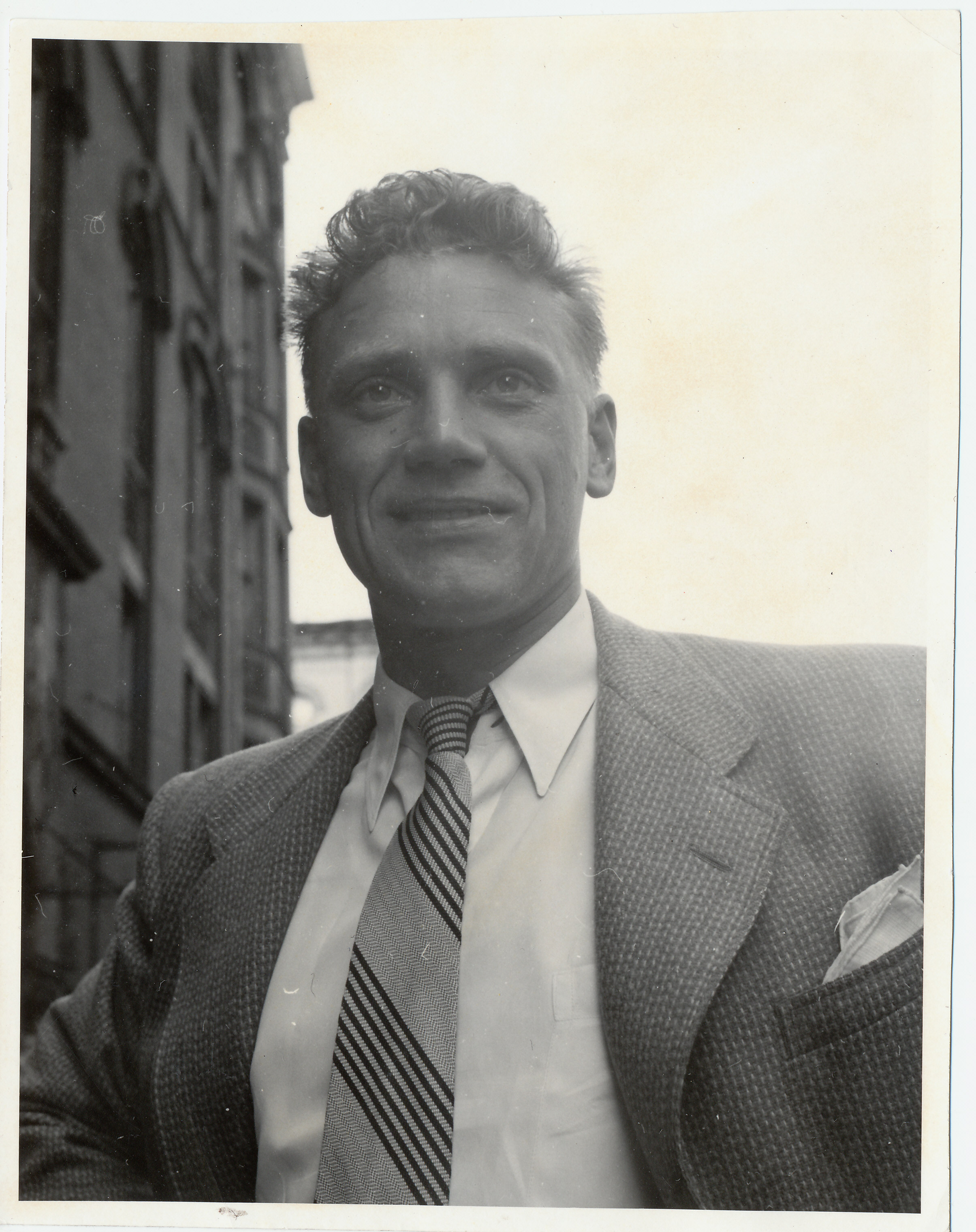
While the MS Skagen was in the Gulf of Mexico, near Mobile, Alabama, Törni jumped overboard and swam to shore. Now a political refugee, Törni made his way to New York City. There, he received assistance from the Finnish-American community residing in Brooklyn's Sunset Park "Finntown", where he worked as a carpenter and cleaner. In 1953, Törni was granted a residence permit through an Act of Congress, a process facilitated by the law firm of William J. Donovan, the former head of the Office of Strategic Services (OSS).
6. Military Career: United States Army
In 1954, Törni enlisted in the United States Army under the provisions of the Lodge-Philbin Act, adopting the name Larry Thorne. Within the U.S. Army, he formed friendships with a group of Finnish-American officers who became known as "Marttinen's Men" (Marttisen miehetFinnish), named after Colonel Alpo K. Marttinen. This group of Finnish wartime officers had immigrated to the United States and joined the U.S. Army under the Lodge Act, with several becoming instrumental in the inception of the U.S. Special Forces.
6.1. Special Forces Service
With the support of "Marttinen's Men," Thorne joined the U.S. Army Special Forces. He became an instructor, teaching crucial skills such as skiing, survival, mountaineering, and guerrilla tactics. He also attended airborne school and advanced in rank to Sergeant. After receiving his U.S. citizenship in 1957, Thorne attended Officer Candidate School and was commissioned as a First Lieutenant in the Signal Corps on January 9, 1957. He later received a Regular Army commission and was promoted to Captain on November 30, 1960.
From 1958 to 1962, Thorne served with the 10th Special Forces Group in West Germany at Bad Tölz. During this period, he was the second-in-command of a search and recovery mission in the high Zagros Mountains of Iran, an operation that significantly enhanced his reputation. While stationed in Germany, he briefly visited his relatives in Finland. In a 1962 episode of The Big Picture, an American television series, footage filmed in 1959 showed Thorne as a Lieutenant with the 10th Special Forces Group.
6.2. Vietnam War Service
Thorne was deployed to South Vietnam in November 1963 to support Army of the Republic of Vietnam (ARVN) forces during the Vietnam War. He and Special Forces Detachment A-734 were stationed in the Tịnh Biên District, where they were assigned to operate Civilian Irregular Defense Group (CIDG) encampments at Châu Lăng and later Tịnh Biên. During a fierce attack on the CIDG camp in Tịnh Biên, Thorne displayed exceptional valor, for which he was awarded two Purple Hearts and a Bronze Star Medal. This attack was later recounted by author Robin Moore in his 1965 novel, The Green Berets, where the character "Sven Kornie" (or Captain Steve Kornie) was based on Thorne.
Thorne's second tour in Vietnam began in February 1965 with the 5th Special Forces Group. He subsequently transferred to Military Assistance Command, Vietnam - Studies and Observations Group (MACV-SOG), a classified U.S. special operations unit focused on unconventional warfare in Vietnam, serving as a military advisor. Notably, he also participated unofficially with the Republic of Vietnam Armed Forces in 1965.
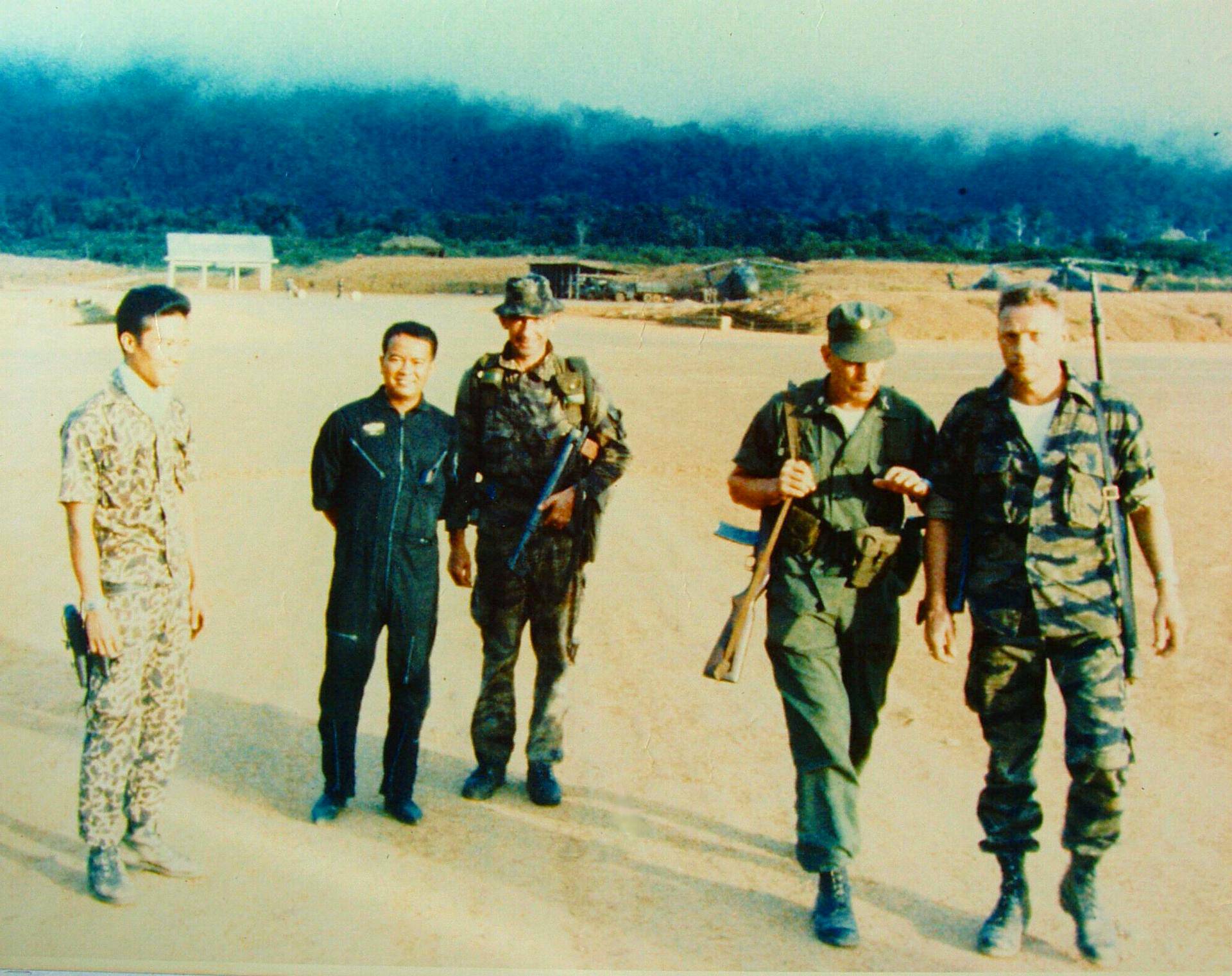
7. Death and Remains Recovery
Larry Thorne died on October 18, 1965, during a covert mission in Laos, as part of Operation Shining Brass. He was supervising the first clandestine mission to locate Viet Cong turnaround points along the Ho Chi Minh trail and destroy them with airstrikes. Two Republic of Vietnam Air Force (RVNAF) CH-34 helicopters departed from Kham Duc Special Forces Camp and rendezvoused with a United States Air Force Cessna O-1 Bird Dog Forward Air Controller in adverse weather conditions over a mountainous area of Phước Sơn District, Quảng Nam Province, Vietnam, approximately 25 mile from Da Nang.
While one CH-34 descended through a break in the weather to drop off a six-man team, the command CH-34 carrying Thorne and the O-1 loitered nearby. After the drop helicopter returned above the cloud cover, both the command CH-34 and the O-1 had disappeared. Thorne perished in the helicopter crash along with the RVNAF personnel aboard: Sergeant Bùi Văn Lành, Lieutenant Nguyễn Bảo Tùng, and Lieutenant Phan Thế Long. Rescue teams were unable to locate the crash site due to the rugged terrain and severe weather. Shortly after his disappearance, Thorne was posthumously promoted to the rank of Major on December 16, 1965, and awarded the Legion of Merit and the Distinguished Flying Cross.
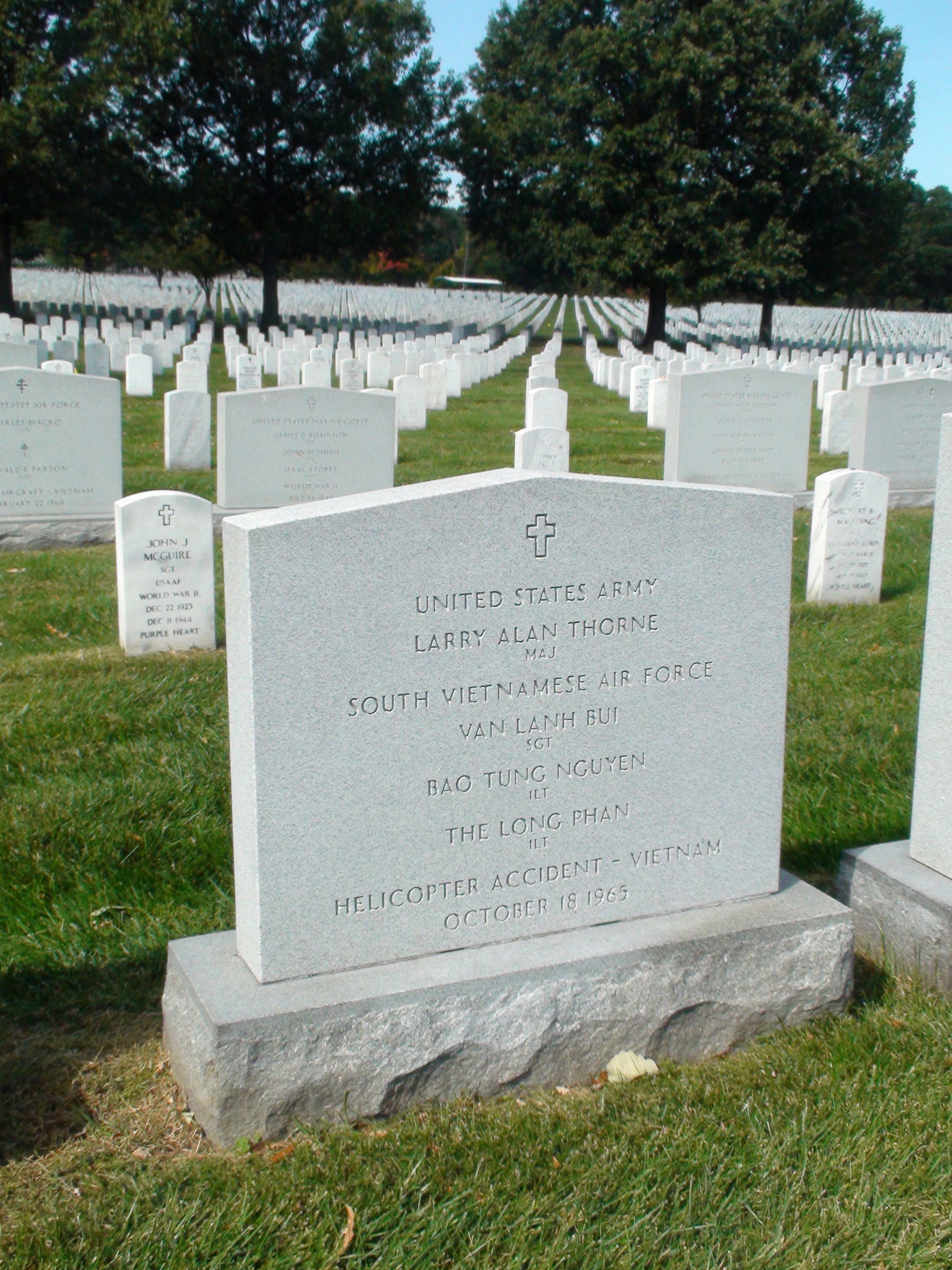
In 1999, Thorne's remains were finally found by a joint Finnish and Joint Task Force-Full Accounting team. His remains were repatriated to the United States following a ceremony at Noi Bai International Airport in Hanoi, attended by then-Secretary of State Madeleine Albright and Ambassador Pete Peterson. Formally identified in 2003, his remains were interred on June 26, 2003, at Arlington National Cemetery, along with the RVNAF casualties from the same mission recovered at the crash site. Notably, Larry Thorne is the only former Waffen-SS member interred at Arlington National Cemetery. He is memorialized on the Vietnam Veterans Memorial at Panel 02E, Line 126. At the time of his death, he was survived only by his fiancée, Marja Kops.
8. Dates of Rank
Lauri Törni's progression through military ranks across three different armies:
Finnish Army
- September 3, 1938: Conscript (reserves)
- March 1, 1939: Lance Corporal (reserves)
- May 9, 1940: Second Lieutenant (reserves)
- March 5, 1942: Lieutenant (reserves)
- August 27, 1944: Captain (reserves)
- October 6, 1950: Removed from officers list
German Waffen-SS
- May 18, 1941: UntersturmführerGerman (Nordost)
- April 15, 1945: HauptsturmführerGerman (Sonderkommando Nord)
United States Army
- January 28, 1954: Private
- May 28, 1954: Private E-2
- December 20, 1954: Private First Class
- April 28, 1955: Corporal
- November 17, 1955: Sergeant
- January 9, 1957: First Lieutenant, USAR
- November 30, 1960: Captain, USAR
- December 16, 1965: Major, USAR (posthumous)
9. Awards and Decorations
Lauri Törni, known as Larry Thorne in the U.S. Army, received numerous military awards and decorations from Finland, Germany, and the United States throughout his distinguished and varied career.
Finnish Decorations
- 2nd class Medal of Liberty (July 26, 1940)
- 1st class Medal of Liberty (August 24, 1940)
- 3rd class Cross of Liberty (October 9, 1941)
- 4th class Cross of Liberty (May 23, 1942)
- 2nd class Mannerheim Cross (July 9, 1944)
- 1st Division Memorial Cross
- Border Jaeger Troops Cross
- Defense Forces Bronze Medal
- Winter War Commemorative Medal
- Continuation War Commemorative Medal Gold Award
German Decoration
- Iron Cross, 2nd class (December 11, 1943)
United States Army
Badges
- Combat Infantryman Badge
- Master Parachutist Badge
- Silver German Parachutist Badge
- Special Forces Tab
- Army Special Forces CSIB
Decorations and Medals
- Legion of Merit (posthumous)
- Distinguished Flying Cross (posthumous)
- Bronze Star Medal with "V" device
- Purple Heart with oak leaf cluster (2 awards)
- Air Medal
- Army Commendation Medal
- Good Conduct Medal
- National Defense Service Medal with star
- Vietnam Service Medal with two campaign stars
- Republic of Vietnam Campaign Medal
- Presidential Unit Citation (awarded posthumously in 2001 to Thorne and Special Operations Group members)
Distinguished Flying Cross citation
The President of the United States of America, authorized by Act of Congress, July 2, 1926, takes pride in presenting the Distinguished Flying Cross (Posthumously) to Major (Infantry), (then Captain) Larry Alan Thorne (ASN: 0-2287104), United States Army, for heroism while participating in aerial flight on October 18, 1965, in the Republic of Vietnam. Major Thorne was operations officer responsible for launching a small, combined reconnaissance patrol on an extremely hazardous mission into a suspected Viet Cong stronghold. Due to the extreme hazards attending this mission, including weather and enemy action, Major Thorne volunteered to accompany submission aircraft during the introduction of the patrol in place of the assigned individual. After delivering the patrol to the landing zone, Major Thorne remained with one aircraft in the immediate area to receive an initial report from the patrol on the ground. This report was mandatory since only the vaguest information was available about enemy disposition near the landing zone. If the patrol were immediately confronted by a superior force, Major Thorne would land and extricate the patrol under fire. This was done with total disregard for the inherent dangers and with selfless concern for the ground forces. In so doing, he exposed himself to extreme personal danger which ultimately led to his disappearance and the loss of his aircraft. He had, however, guaranteed the safe introduction of the patrol into the area, the successful accomplishment of this mission and had positioned himself to react to any immediate calls for assistance from the patrol. Due to Major Thorne's efforts, the mission was accomplished successfully and contributed significantly to the overall mission of interdicting Viet Cong activities within the area. Major Thorne's actions were in keeping with the highest traditions of the military service, and reflect great credit upon himself and the United States Army.
General Orders: Department of the Army, General Orders No. 33 (July 26, 1967)
Action Date: October 18, 1965
10. Personal Life
During his time in Sweden in 1949, after escaping Finland, Lauri Törni fell in love with Marja Kops, a Swedish Finn, and they became engaged to be married. However, his journey to the United States and subsequent military career meant their relationship did not lead to marriage. At the time of his death in Vietnam in 1965, he was survived only by his fiancée, Marja Kops.
11. Assessment and Legacy
Lauri Törni's remarkable and controversial military career has left a complex legacy, particularly in Finland and the United States.
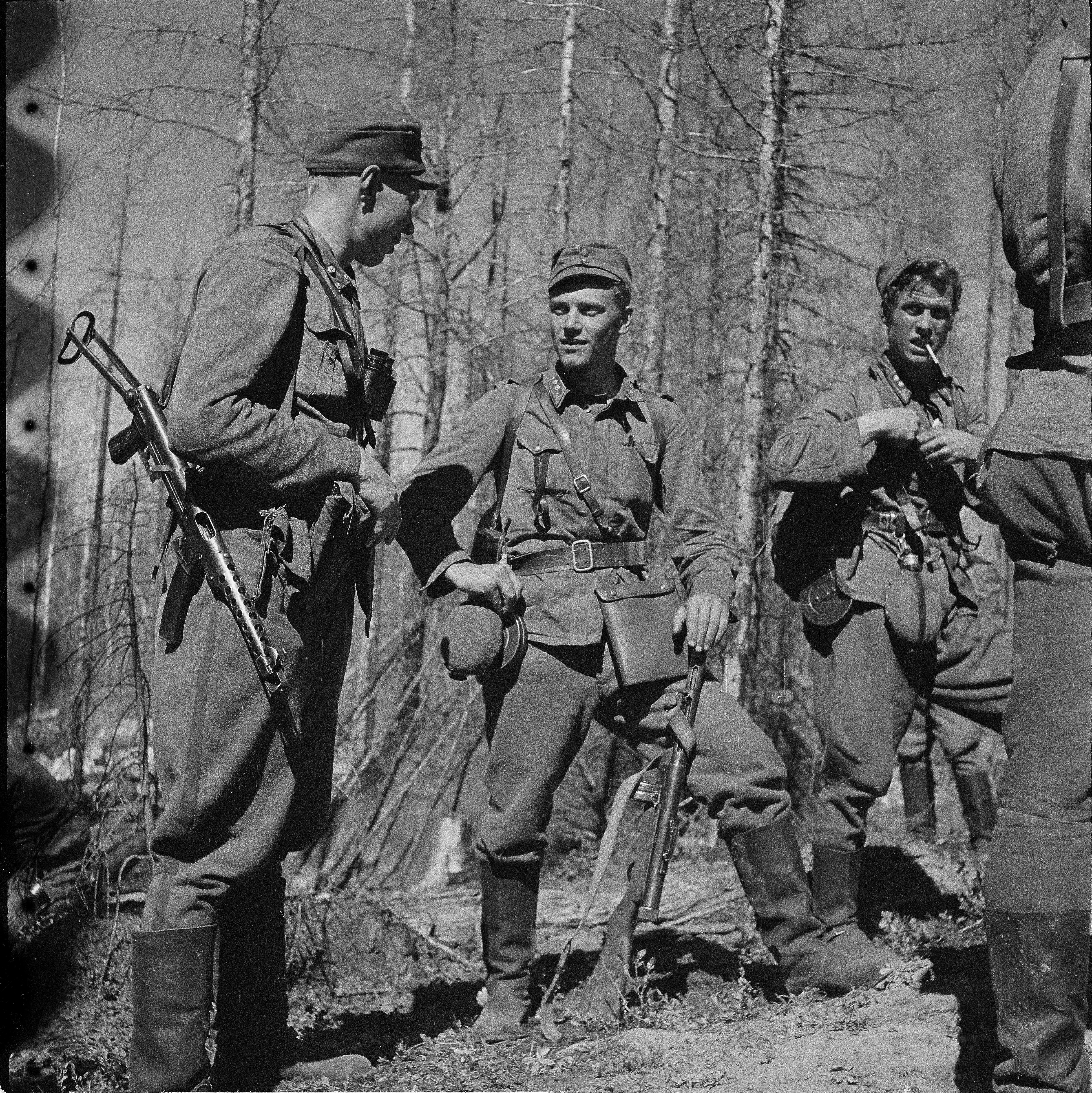
In the 1965 book The Green Berets by Robin Moore, the main character in the first chapter, "Sven Kornie" (also referred to as Captain Steve Kornie), was based on Thorne. His story gained wider recognition in the 1990s with the publication of numerous books about him. In Finland, Törni was ranked 52nd in the Suuret Suomalaiset (Great Finns) listing of famous Finns. In a 2006 survey by Suomen Sotilas (Soldier of Finland) magazine, he was voted the most courageous recipient of the Mannerheim Cross. The Swedish power-metal band Sabaton also dedicated a song to him, titled "Soldier of 3 Armies".
However, Törni's legacy is not without controversy, particularly concerning his service with the Waffen-SS and his treason conviction in Finland. In their 2013 book Tuntematon Lauri Törni (Unknown Lauri Törni), authors Juha Pohjonen and Oula Silvennoinen argued that Törni's conviction for treason was justified. They contended that the Waffen-SS training he received at the end of World War II was intended to support a National Socialist coup in Finland. This perspective has been challenged by members of the Lauri Törni Heritage Guild, Markku Moberg and Pasi Niittymäki, who acknowledge the pressures Törni faced from the war and alcohol but assert that he did not support Germany's ideology. Additionally, Finnish historian and former Minister of Defence Jussi Niinistö argued that Törni's training was motivated by patriotism towards Finland and accused Pohjonen and Silvennoinen of sensationalism, disregarding the genuine fear in Finland of a Soviet occupation.
11.1. Commemoration and Remembrance
Törni's life and military achievements have been honored through various commemorations. In Finland, the survivors, friends, and families of Detachment Törni formed the Lauri Törni Tradition Guild (Lauri Törni Perinnekilta ryFinnish). The Infantry Museum (JalkaväkimuseoFinnish) in Mikkeli, Finland, and the Military Museum of Finland in Helsinki both feature exhibits dedicated to Törni.
In the United States, Thorne's name achieved legendary status within the U.S. Special Forces even before his death. The Larry Thorne Headquarters Building for the 10th Special Forces Group (Airborne) at Fort Carson, Colorado, is named in his honor. The 10th Group annually presents the Larry Thorne Award to the best Operational Detachment-Alpha in the command. Additionally, Special Forces Association Chapter 33 in Cleveland, Tennessee, is named after him. In 2010, he was named the first Honorary Member of the United States Army Special Forces Regiment, and in 2011, he was inducted into the United States Special Operations Command (USSOCOM) Commando Hall of Honor.